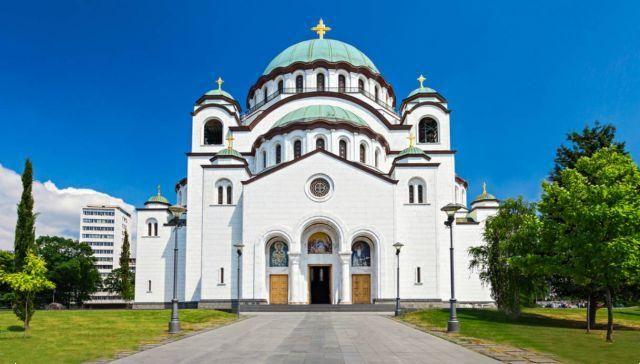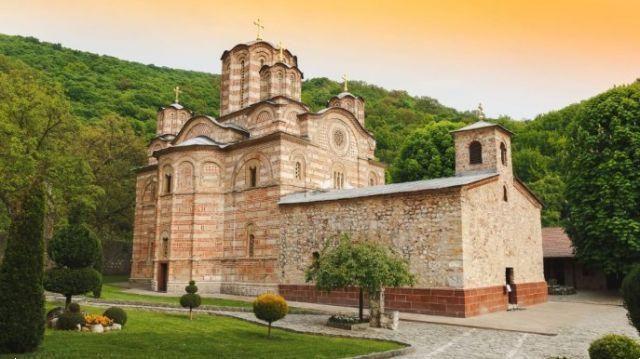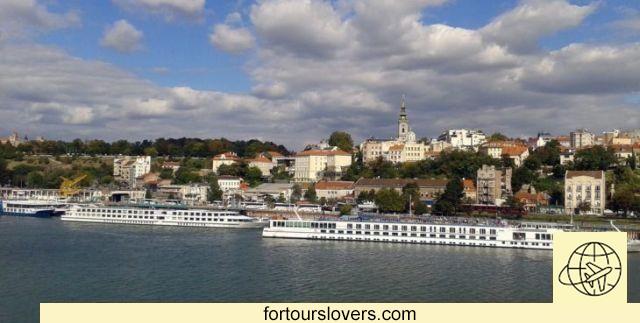 The park of the capital of Serbia, Belgrade, with the fortress, the beaches and the bohemian district: here are five things not to be missed
The park of the capital of Serbia, Belgrade, with the fortress, the beaches and the bohemian district: here are five things not to be missed
You can walk in the large park between the fortress and the testimonies of the wars of the past. Or in the large pedestrian shopping street or in the music district. Or again, you can visit the largest Orthodox church in the world and then relax on the beach. Here's what to do in Belgrade, the capital of Serbia. Ideal for a relaxing and fun holiday.
One of the places most loved by tourists is certainly the park Kalemedgan, located on a hill overlooking the city. The name in Turkish means "battle fortress", although that term only refers to the park surrounding the actual fortress where the sieges against the city and open field battles took place.
All that remains of the ancient fortress are the walls, bastions, fortifications and moats. There are also remains from the Roman age, but most of the fortified buildings are from the Byzantine, Ottoman and Austrian periods. Among the best preserved buildings are the gates, the clock tower and the exhibition buildings. While inside the fortress there are cannons, armed forces and other means of war. Also weapons and flags from wars related to the history of Serbia.
But there are so many monuments in the park. There is it statue of the winner (work of the sculptor Ivan Mestrovic) which celebrates the victory of the First World War against the Austro-Hungarian Empire. There is the fountain Mehemet Pascia (16th century) named after a young Christian kidnapped by the Ottomans and who first became a Janissary and then Grand Vizier. Finally you can admire the large Ottoman mausoleum built as a tomb for a Grand Vizier, the Chapel of the Great Mother of God and the Institute for Cultural Heritage.
Ada Ciganlia. 4 kilometers from the city center is the island of Ada Ciganlija, the heart of the sporting life of the Serbian capital. There are 7 kilometers of beaches on the shores of Lake Savsko Jezero, some stretches of which are reserved for bathing establishments (some with fences for children to swim in) and then there are long stretches of free beach. There are many bars, restaurants, pubs, kiosks and cinemas that can also be reached by bike thanks to a cycle path that surrounds the lake.
Then there are clubs and sports facilities of all kinds: rowing, tennis, volleyball, basketball, football, five-a-side football, bowls, skateboarding and bungee jumping, but also chess and diving. And just like in Geneva, in the lake there is a fountain (since 1996) which launches a jet of water up to 140 metres: spectacular at night when the environment is illuminated. The island is 100% pedestrian and only bicycles can circulate, as well as the electric train for tourists. Furthermore, in the summer period, the lines are increased.
Prince Mihailov. It is the pedestrian street of Belgrade, in the historic center of the capital, which connects to Republic Square and Terazije. It is included in the monumental areas of the city subject to artistic restrictions. This is probably the most important pedestrian street not only in Serbia, but in all of Eastern Europe. Visited by tourists and Belgraders, for shopping to reach the attractive areas of the city and to do business.
In the street there are many sumptuous and important buildings. Like the National Library of Serbia, a 800th century building in Romantic style. The academy gallery, built with architectural features inspired by the Renaissance style. And then the urban housing block which fuses the two styles, the Romantic and the Renaissance, which can be found in three different buildings. Finally theAcademy of Sciences and Fine Arts and which inside contains historical finds, gallery and antiques.
There are also many fashion shops (all the main international fashion brands) as well as bars, restaurants and souvenir and jewelery shops.
Skadarlja. Another delightful place in the Serbian capital is Skadarlja Street, in the historic centre, a bohemian district compared to Montmartre for its welcoming atmosphere. The former gypsy district, which over time has become a meeting and discussion place for intellectuals and artists. It is a half kilometer cobbled street and some side alleys.
There are many restaurants where you can eat while listening to live traditional music. Or you can visit the house of the Serbian writer and painter Dura Jaksic, for years a meeting place for artists and a lively cultural space. Tourists can also stay at Le Petit Piaf, one of the oldest houses on the street.
Don't miss the temple of Saint Sava, the largest Orthodox church in the world, in the municipality of Vracar. A large religious structure with a central plan onto which a dome supported by plumes opens, built in 1935 in neo-Byzantine style which can contain up to 10 thousand people between arches and galleries. In the crypt (decorated with mosaics) there is the treasure of San Sava. A building of great artistic value.
The exterior is made of travertine marble, while the domes are covered with copper, while the towers contain 49 bells. The interior is finely decorated but still incomplete. The large central dome will be embellished with a fresco depicting Christ Pantocrator. Outside the religious complex there is a large park where you can enjoy the beautiful climate of the Serbian capital.





